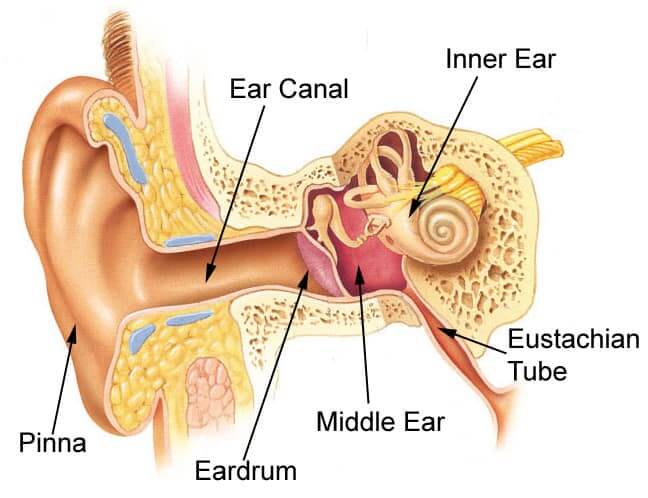The Agarwal Hospital and Research Institute explains how the ear works.

The peripheral and central components of our auditory system can be broadly divided into two groups. The outer, middle, and inner ears are all part of peripheral hearing. The eardrum, auricle, and ear canal make up the outer ear. Malleus, incus, and stapes are located in the middle ear. The term “ossicles” refers to all three of these tiny bones. The stapes connects to the inner ear, whereas the malleus attaches to the eardrum, which links to the outer ear. The auditory nerve connects the cochlea in the inner ear, which is then connected to the brain’s hearing centre. The cochlea is made up of a number of unique fluids that are crucial to the hearing mechanism. The auditory nerve and an extraordinarily complicated passage from the brain stem to the auditory cortex make up the central hearing system.
The auricle gathers sound waves or merely environmental vibrations and directs them into the ear canals. The eardrum is vibrated by these sound waves. These eardrum vibrations are now transmitted to the middle ear’s ossicles. The cochlea in the inner ear receives vibrations from here.
A large variety of these vibrations can be detected by the cochlea’s millions of hair cells. While low-pitched vibrations excite hair cells in the top section of the cochlea, high-pitched noises only affect the lower area. Each hair cell produces nerve impulses after determining the frequency or pitch of a sound, which are then promptly transmitted down the auditory nerve.
The hearing centre of the brain is called the auditory cortex. Here, a few of these vibrations are transformed into audible sound. This entire process is completed in a split second.
For Online Consultation Visit our website : Agrawal Hospital and research Institute
Our Facebook page : Agrawal Hospital and research Institute



